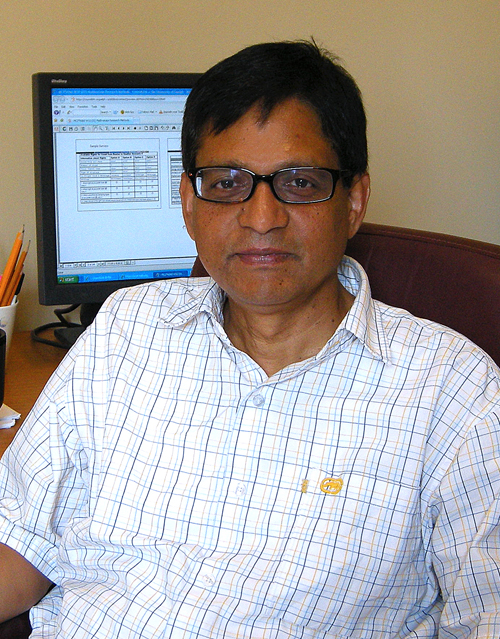
Every business wants to unravel the secrets of consumer decision-making. Why do people make the choices they make? Can we separate customer choice (or preference) from uncertainty (or inconsistency)? What influences choices, and how do preferences and inconsistencies change over time?
Research by Prof. Towhidul Islam, Marketing and Consumer Studies, can help answer some of those questions. But he intends to do more than help corporations do a better job of selling their products. By informing regulators, industry and governments about how choices are made, he hopes to help shape policies requiring clearer and more complete information for consumers.
Islam says missing information can make it harder to figure out what you want to do.
“Let’s say you go to buy a car, and the salesperson gives you some information about the car. The information he gives you may be interesting and may be helpful, but it’s not all the information. Some is held back from you. How is that going to affect your ability to make the right decision about what car to buy?”
He is investigating how missing information affects product choices. So far, he has shown that consumers with incomplete information make more inconsistent and sub-optimal decisions.
While most research looks only at consumer choices, Islam separates those choices from consumer inconsistencies.
Buying a car is relatively uncomplicated compared to his area of study: financial products for retirement saving. Governments are pushing for clearer disclosure and improved financial literacy. But we don’t know how best to communicate complex financial information to decision-makers, Islam says.
“Currently we’re studying this in Australia and looking at how people choose between the various pension funds. In our study, we provide information in various ways using experimental design and look to see what situations allow people to make the optimal decisions according to standard portfolio theory.”
The world of pension funds and financial products can be overwhelming, and the “right choice” for one person won’t be right for another. While some research simply asks large groups of people about preferences and choices, Islam says you need to know more about survey participants in order to understand their investment choices.
“You need the socio-demographics. If you are older, younger, richer or poorer, you need to make different choices. Our objective in this is to help governments develop policies that will assist consumers in making decisions that will benefit both the industry and the consumer. More efficient investment choices will improve the economic welfare of retirees, reduce the burden on the working-age population and improve fiscal sustainability.”
So far he has found that variability in response, or choice inconsistency, stems from age and “risk profile” score, and that preferences vary with income and age. Low-income younger people are generally risk-averse; for them preserving capital seems to be a major concern and they are also more susceptible to higher fees. High-income older individuals may react positively to both higher returns and increasing risk. These findings should assist regulators and providers to help “at-risk” retirement savers, says Islam, who has received funding from the Australian Research Council to continue this work.
His research surveys are designed to gather more detailed information from respondents than most earlier studies, he says. He asks consumers to choose from among combinations of features and to rank options as most- and least-favourite, for example.
Funding from the Social Sciences and Humanities Research Council will allow him to build models for individual consumers and investigate their choices and inconsistencies over time, between product categories and between countries (Australia and Canada).
“Without knowing the level of uncertainty, it is hard to make predictions about future behaviour,” he says. “For example, if students were asked to rate me as a professor, two students might both give me a rating of four out of five. For one student, that might be a definite four. He’s pretty certain about me.
“But the other student might be less certain about that four. Maybe she was thinking of giving me a three, but in the end put down the four. The first student would probably sign up to take another class with me. The second student, even though she gave me the same numerical preference, might not.”
He also plans to study how his respondents’ decisions are influenced by other individuals.
“When we do this research, we usually study individuals. But many product purchases are not individual decisions. A husband and wife might decide together about what pension fund to buy into. A house purchase might have input from the entire family, including the kids. Currently we’re not capturing that kind of decision-making, and I think it’s important to understand more about that.”